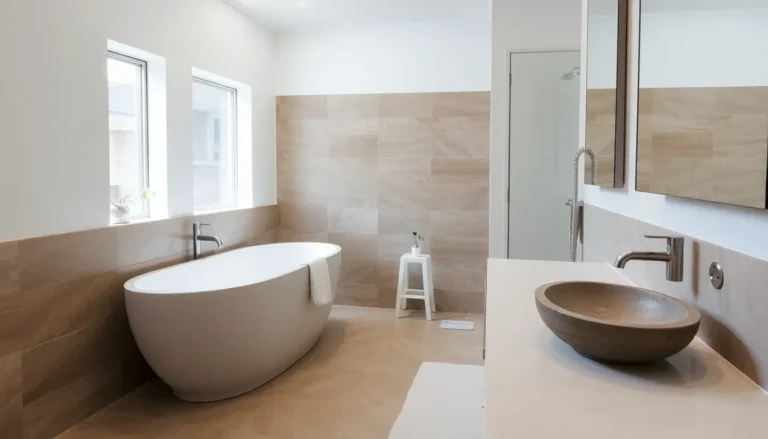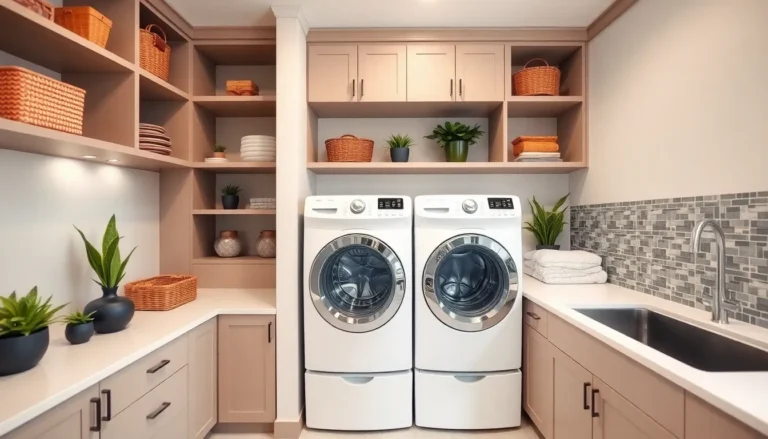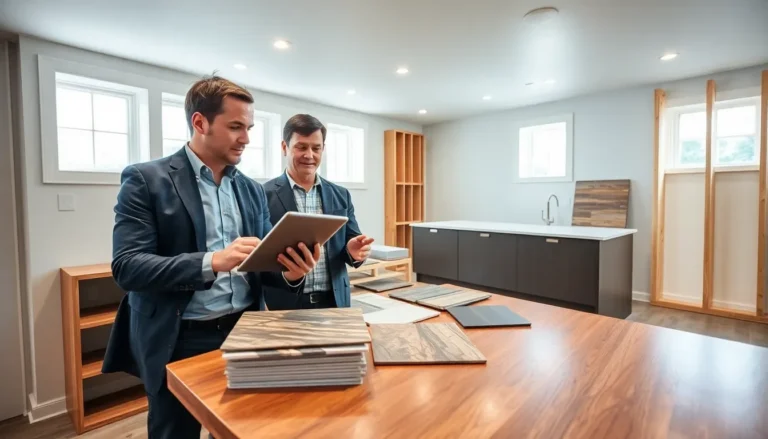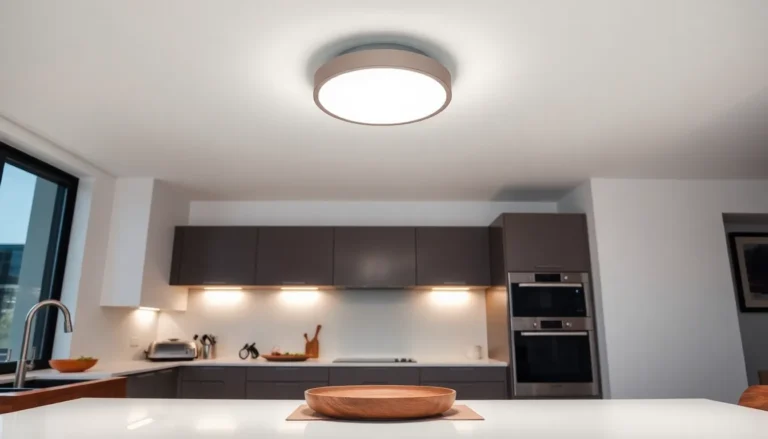Table of Contents
ToggleAre renovations dancing in your head like sugar plums at Christmas? You’re not alone. Many homeowners gaze longingly at their not-so-perfect kitchens or bathrooms, dreaming of transformation. Luckily, there’s a nifty little financial tool called a Home Equity Line of Credit (HELOC) that can help turn those dreams into reality without selling a kidney. Curious? Read on to discover how a HELOC can set the stage for your home’s glow-up.
What Is A Home Equity Line Of Credit?

A Home Equity Line of Credit, or HELOC as the cool kids say, is a revolving line of credit that allows homeowners to use the equity in their homes for various needs, including renovations. Essentially, it works like a credit card that’s tied to your home’s value. When you have a HELOC, you can borrow against your home’s equity, money you’ve already invested into it.
Often, lenders will approve between 75% to 85% of your home’s equity, giving you a chunk of change to work with. How does this work? Let’s say your home is valued at $400,000, and your mortgage balance is $250,000. Assuming a lender allows you to tap into 80% of the equity, you could potentially borrow up to $120,000. It’s a sweet deal for those itching to upgrade their spaces.
Benefits Of Using A HELOC For Renovations
Choosing a HELOC for renovations comes with a list of perks that can make a homeowner’s heart sing.
Flexibility
Unlike traditional loans, HELOCs offer outstanding flexibility. Homeowners can draw funds as needed, which means you don’t have to borrow a lump sum upfront. This is perfect for ongoing renovation projects where costs can vary.
Lower Interest Rates
Typically, HELOCs boast lower interest rates compared to personal loans or credit cards. Since your home secures the loan, lenders are happier to offer lower rates. This can save you a significant amount in interest payments as you tackle renovation costs.
Interest-Only Payments
During the draw period, many HELOCs allow for interest-only payments, easing the financial burden while you invest in home improvements. It’s like stretching your dollar further, giving yourself breathing room while getting that kitchen countertop upgrade.
Potential Tax Benefits
In certain circumstances, the interest on a HELOC may be tax-deductible. This could lead to more savings, depending on your financial situation and how the funds are used.
How To Determine If A HELOC Is Right For Your Renovation Project
Now, before you leap into the HELOC pool, it’s crucial to assess if it’s the right fit for your renovation dreams.
Evaluate Your Financial Situation
Begin by taking a good hard look at your financial health. Do you have a stable income? A manageable debt-to-income ratio? Knowing where you stand financially will help inform your decision.
Assess Your Renovation Needs
What kind of renovations are you eyeing? If your plans involve extensive remodeling or rebuilding, a HELOC might just be the golden ticket. Make sure to compare the costs and potential value increases to ensure you’re making a sound investment.
Project Timeline
Consider your time frame. A HELOC can be a great choice for quick projects, especially those that need immediate funding. But, if your renovations are long-term, you might want to explore other financing options that could offer more favorable terms.
Steps To Secure A HELOC For Home Renovations
If you’ve decided that a HELOC is the way to go, here are the steps to secure one:
1. Check Your Credit Score
First things first, see what your credit score looks like. Most lenders prefer a score of 620 or higher. A good credit score may grant you better terms and lower interest rates.
2. Gather Documentation
Prepare essential documents such as recent pay stubs, tax returns, and information on your mortgage. Lenders will need these to evaluate your financial situation and determine how much they’ll allow you to borrow.
3. Shop Around
Not all HELOCs are created equal. Different lenders offer various terms and rates, so make sure to shop around for the best deal. Talk to your bank, local credit unions, or online lenders.
4. Apply
After finding a lender that suits your needs, it’s time to fill out an application. Expect a thorough review process as lenders will scrutinize your creditworthiness and home equity.
5. Closing
Once approved, you’ll go through a closing process, similar to your mortgage. Be prepared for possible closing costs, but remember this is a worthwhile investment in your home.
Best Practices For Using HELOC Funds Effectively
Alright, you’ve got the HELOC. Now, what’s next? Making the most of those funds is vital.
Set a Budget
Start by creating a budget for your renovations. Determine how much you need for each aspect of your project and stick to that plan. Overspending can lead to financial headaches later on.
Prioritize Projects
Focus on high-value renovations first. What areas will yield the most return on investment? Kitchens and bathrooms often provide the highest resale values. Concentrate your efforts there before tackling less critical upgrades.
Keep Records
Maintain thorough documentation of all expenses. This helps you stay organized and may also be useful if you want to itemize deductions come tax time.
Common Mistakes To Avoid When Using A HELOC For Renovations
Navigating a HELOC can be tricky: hence, avoiding common pitfalls will help ensure a smooth renovation process.
Underestimating Costs
Home improvement projects often come with unexpected expenses. It’s wise to set aside additional funds for unforeseen costs to avoid dipping into your personal savings or accruing more debt.
Not Having a Plan
Diving into renovations without a solid plan is like wandering in the dark. Outline every detail of your project to avoid chaos along the way.
Ignoring Interest Rates
Be aware of how your HELOC interest rates can fluctuate. Regularly check in on your financial standing to ensure you can comfortably make payments as rates change.







